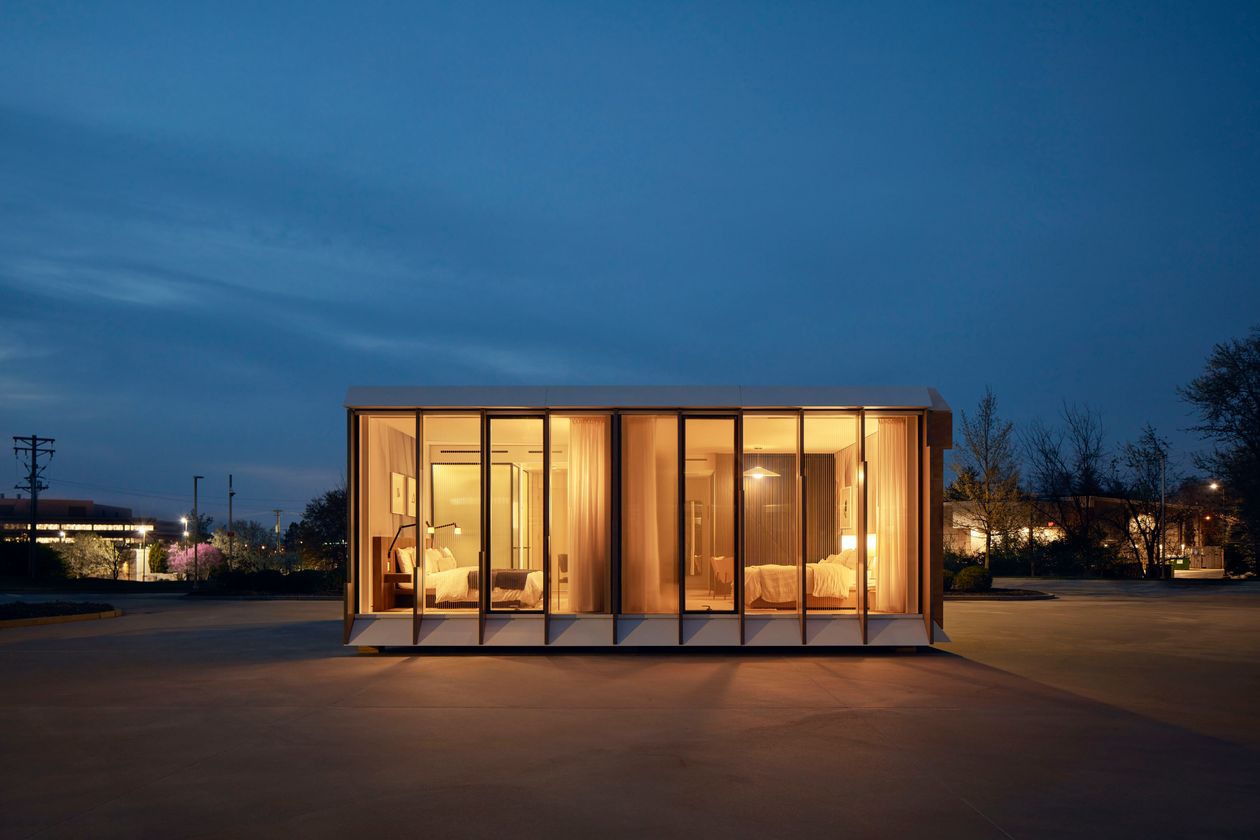Warren Buffett to Offer a New Spin on Modular Construction
A startup owned by Berkshire Hathaway aims to make the construction industry more like car manufacturing.
A startup owned by Warren Buffett’s Berkshire Hathaway Inc. aims to shake up the construction industry by making it more like car manufacturing.
MiTek Inc., a Missouri-based construction-technology company, is launching a new modular building venture with New York City-based architect Danny Forster & Architecture. The company plans to build entire rooms for hotels and apartment buildings in factories, and then send them to a construction site to be stacked on top of each other.
MiTek has more than 6,000 employees and sells building components, construction software and services like engineering. The company said it is investing tens of millions of dollars in the modular venture, and plans to start working on its first projects early next year.
Modular construction isn’t new, but companies have struggled to be profitable. Transporting entire rooms to construction sites can be expensive, and some finished buildings have suffered from leaky facades.
Other efforts to streamline the construction process have also had issues. Katerra Inc., a Silicon Valley-based startup, has been looking to move a bigger part of construction work to factories and become a one-stop shop that cuts out middlemen like plumbers and architects. But it has struggled under this model, and its main backer, SoftBank Group Corp., had to bail it out.
MiTek looks to modernize modular construction by requiring assembly by general contractors. Instead of building entire rooms in a factory and driving them to a construction site on a flatbed truck, MiTek wants to ship kits of manufactured building parts along with instructions.
General contractors would then construct rooms from these parts, which would include a steel cage forming the structural support for the room, in a warehouse or other type of industrial building near the construction site.
Shipping the parts, rather than entire rooms, keeps transportation costs low and allows MiTek to supply the country from its factory in Lebanon, Pa., said Todd Ullom, the company’s vice president of modular building solutions.
That companies continue to invest in modular construction despite the challenges speaks to the business model’s promise, proponents say. Construction is a massive industry, plagued by rising costs and inefficiencies. Anyone who manages to automate it the way Henry Ford once changed car manufacturing stands to make a fortune, some industry observers say.
“How come an entire industry is operating on mid-to-late-20th-century mode when we’re a quarter of the way, almost, into the 21st century?” said Barry LePatner, a New York-based construction attorney. “It drives me crazy.”
MiTek’s approach brings its own challenges. Relying on customers to assemble rooms based on written instructions can be tricky. Many general contractors are resistant to change, which could lead to friction and mistakes.
Mr. Ullom, who worked as a general contractor for more than 30 years, said relying on a single supplier instead of numerous subcontractors reduces risk, and the instructions are simple to follow. He said MiTek would offer on-site training.
MiTek also plans to automate much of its 225,000-square-foot factory, for example by using robotic welders, not unlike how auto makers assemble cars. Architect Danny Forster’s firm has designed what could become the world’s tallest modular hotel, a planned 26-story building for Manhattan. He said other modular-construction companies moved work from building sites into factories but failed to make it faster or more efficient.
“A lot of times it has been bringing the chaos of the construction site and just putting a roof over it,” he said.
Reprinted by permission of The Wall Street Journal, Copyright 2021 Dow Jones & Company. Inc. All Rights Reserved Worldwide. Original date of publication: May 18, 2021.
 Copyright 2020, Dow Jones & Company, Inc. All Rights Reserved Worldwide. LEARN MORE
Copyright 2020, Dow Jones & Company, Inc. All Rights Reserved Worldwide. LEARN MORE
This stylish family home combines a classic palette and finishes with a flexible floorplan
Just 55 minutes from Sydney, make this your creative getaway located in the majestic Hawkesbury region.
Continued stagflation and cost of living pressures are causing couples to think twice about starting a family, new data has revealed, with long term impacts expected
Australia is in the midst of a ‘baby recession’ with preliminary estimates showing the number of births in 2023 fell by more than four percent to the lowest level since 2006, according to KPMG. The consultancy firm says this reflects the impact of cost-of-living pressures on the feasibility of younger Australians starting a family.
KPMG estimates that 289,100 babies were born in 2023. This compares to 300,684 babies in 2022 and 309,996 in 2021, according to the Australian Bureau of Statistics (ABS). KPMG urban economist Terry Rawnsley said weak economic growth often leads to a reduced number of births. In 2023, ABS data shows gross domestic product (GDP) fell to 1.5 percent. Despite the population growing by 2.5 percent in 2023, GDP on a per capita basis went into negative territory, down one percent over the 12 months.
“Birth rates provide insight into long-term population growth as well as the current confidence of Australian families,” said Mr Rawnsley. “We haven’t seen such a sharp drop in births in Australia since the period of economic stagflation in the 1970s, which coincided with the initial widespread adoption of the contraceptive pill.”
Mr Rawnsley said many Australian couples delayed starting a family while the pandemic played out in 2020. The number of births fell from 305,832 in 2019 to 294,369 in 2020. Then in 2021, strong employment and vast amounts of stimulus money, along with high household savings due to lockdowns, gave couples better financial means to have a baby. This led to a rebound in births.
However, the re-opening of the global economy in 2022 led to soaring inflation. By the start of 2023, the Australian consumer price index (CPI) had risen to its highest level since 1990 at 7.8 percent per annum. By that stage, the Reserve Bank had already commenced an aggressive rate-hiking strategy to fight inflation and had raised the cash rate every month between May and December 2022.
Five more rate hikes during 2023 put further pressure on couples with mortgages and put the brakes on family formation. “This combination of the pandemic and rapid economic changes explains the spike and subsequent sharp decline in birth rates we have observed over the past four years,” Mr Rawnsley said.
The impact of high costs of living on couples’ decision to have a baby is highlighted in births data for the capital cities. KPMG estimates there were 60,860 births in Sydney in 2023, down 8.6 percent from 2019. There were 56,270 births in Melbourne, down 7.3 percent. In Perth, there were 25,020 births, down 6 percent, while in Brisbane there were 30,250 births, down 4.3 percent. Canberra was the only capital city where there was no fall in the number of births in 2023 compared to 2019.
“CPI growth in Canberra has been slightly subdued compared to that in other major cities, and the economic outlook has remained strong,” Mr Rawnsley said. “This means families have not been hurting as much as those in other capital cities, and in turn, we’ve seen a stabilisation of births in the ACT.”
This stylish family home combines a classic palette and finishes with a flexible floorplan
Just 55 minutes from Sydney, make this your creative getaway located in the majestic Hawkesbury region.






















